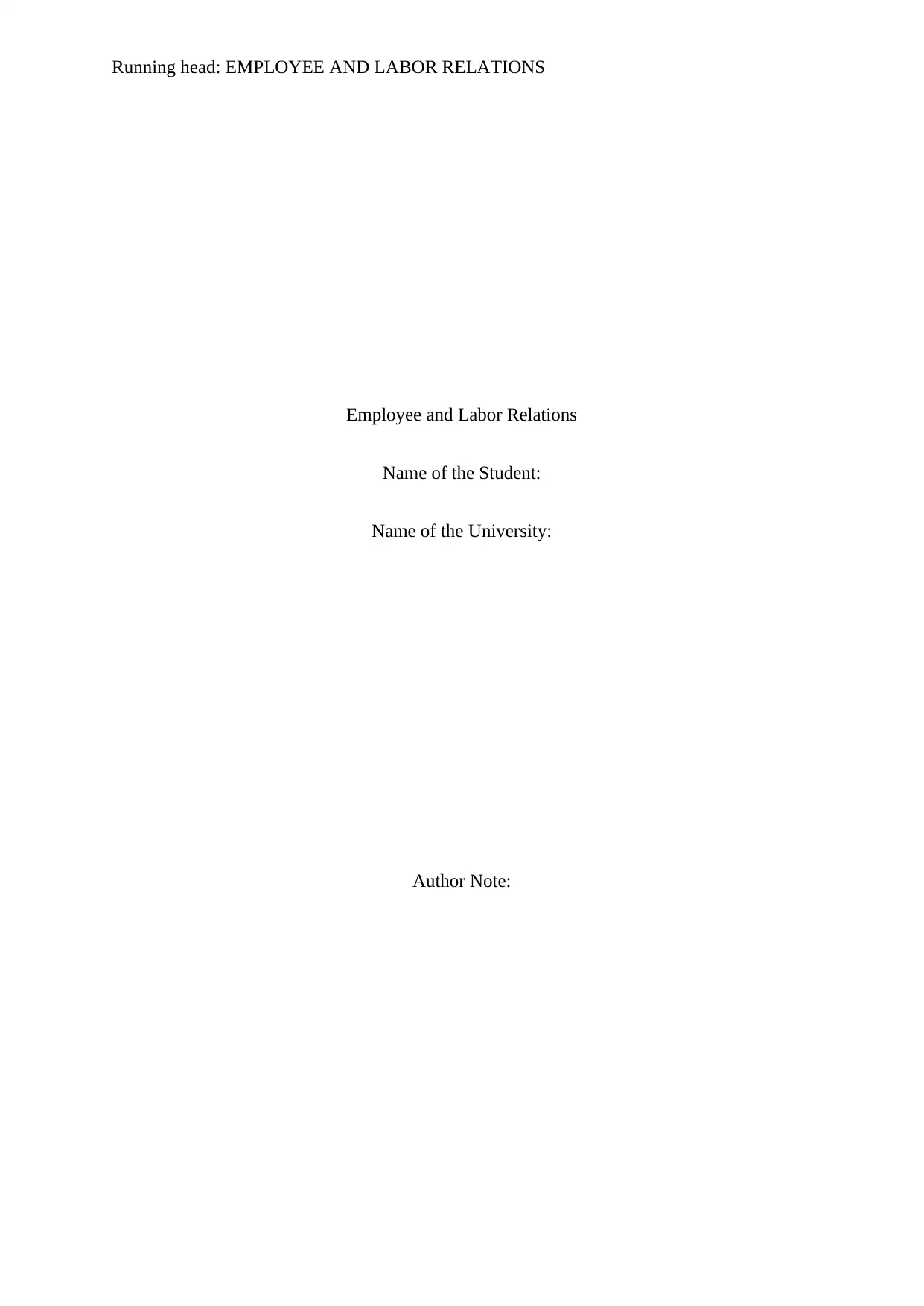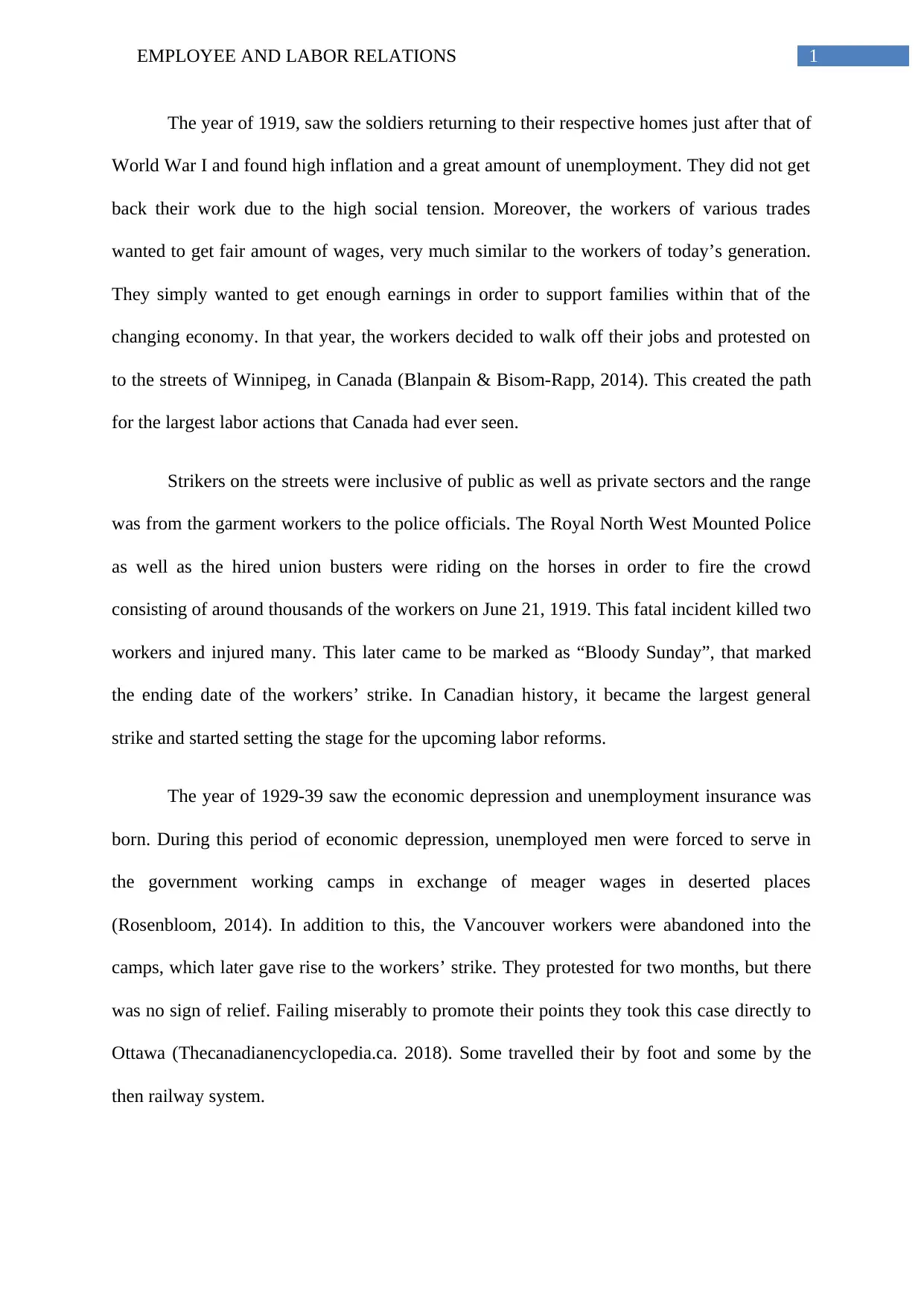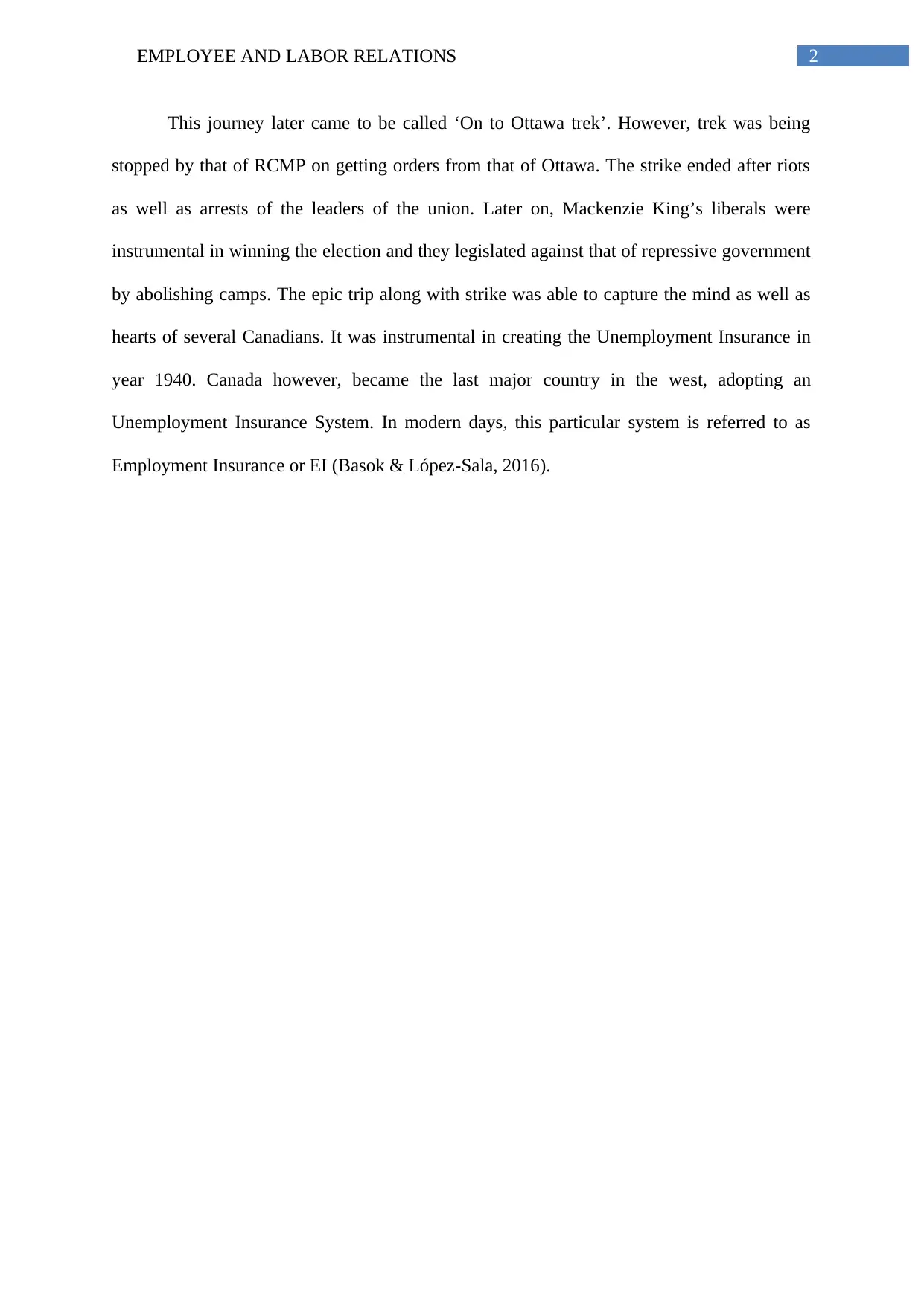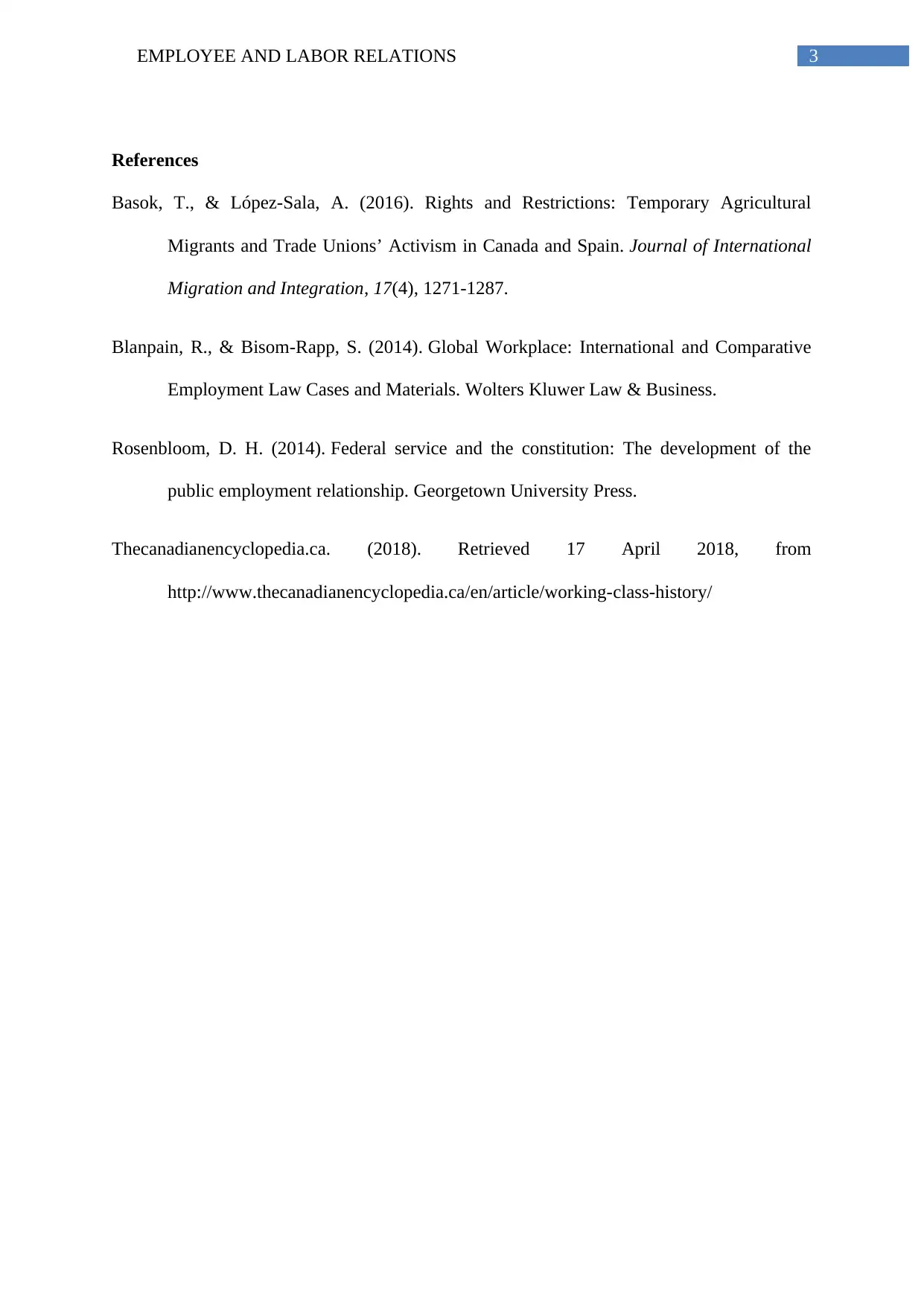Employee and Labor Relations Report: Canadian Labor History Analysis
VerifiedAdded on 2021/04/21
|4
|662
|37
Report
AI Summary
This report provides an overview of significant events in Canadian employee and labor relations, beginning with the context of post-World War I, high inflation, and unemployment that led to the Winnipeg strike in 1919, a pivotal moment marked by 'Bloody Sunday' and the start of labor reforms. It then examines the economic depression of 1929-39, the emergence of unemployment insurance, and the 'On to Ottawa Trek' by Vancouver workers protesting government work camps. The report highlights the impact of these events on Canadian labor laws, the creation of Unemployment Insurance in 1940, and its evolution into the modern Employment Insurance system, underscoring the historical struggles and achievements in establishing workers' rights and social safety nets in Canada.
1 out of 4





![[object Object]](/_next/static/media/star-bottom.7253800d.svg)